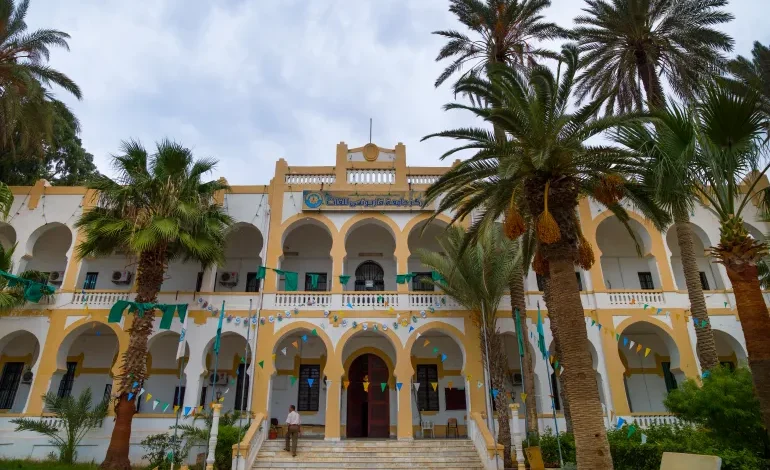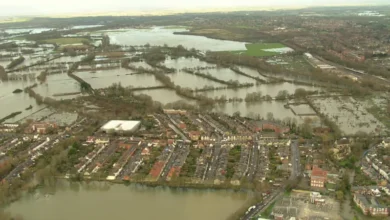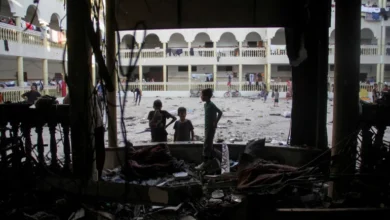Cultural treasure or painful reminder? Libya’s colonial architecture

It happened in the middle of the night, as most destructive operations carried out without the consent of the local population are. In March 2023, an area of Benghazi’s historical centre including several buildings of Italian colonial heritage, was razed to the ground.
So unexpected was the operation conducted by the Libyan military, that even Benghazi’s mayor was taken by surprise.
The raid on the historic city centre was carried out to clear the debris left behind by past and ongoing conflicts, and to clear the way for a new, modern centre. The reconstruction has not been carried out in an organic way, and now, while some buildings have been reconstructed or substituted by modern ones, others, like the Berenice Theatre, are still rubble.
Benghazi was badly damaged by bombing during the second world war, rebuilt and then destroyed again during the 2014 – 2018 civil war.
The damage from the wars and the drive to regenerate in more recent years have effectively obliterated a large part of modern Libyan history. One of the most significant examples of this lost history was the Berenice Theatre. Built in 1928, it represented one of the very few places of entertainment, art and gathering for the citizens of the city throughout the following decades.
Having suffered heavy damage during World War II, it was rebuilt in the post-war period and remained operating until the 1980s, when it was finally closed. However, during the 2023 reconstruction project, the theatre was completely demolished with no plans to rebuild it. All that remains is rubble.
Its heyday is remembered fondly by many. “As often recalled by locals, in 1969 the theatre hosted a famous performance by singer Umm Kulthum,” recalls artist and architect Sarri Elfaitouri. “The Berenice Theatre until this day holds an intimate place in the hearts of the locals and is considered an essential landmark in the collective memory of the city.”
The erasure of colonial-era architecture, leaving large voids in what many have come to consider as their own intimate heritage – part of their own history – can be seen playing out across Libya. The country’s capital, Tripoli, is going through a similar restoration and modernisation process, albeit a more gradual one and without any incidents of overnight bulldozing. Instead, many heritage and colonial-era buildings in the old medina have been, or are in the process of being, restored.
A heritage obliterated?
Hiba Shalabi, a curator, artist, and activist who campaigns to protect Tripoli’s heritage, says she has felt a strong feeling of beauty and belonging towards Tripoli’s ancient city – particularly its squares – since she was a child.
Shalabi was particularly fond of the Italian colonial statues of animals such as gazelles and cheetahs. She recalls in particular, two leopards in Zawiyat al-Dahmani Park, near the Mahari Hotel. “My late father used to take me and my brother to play around them a lot, climbing on top of them, imagining riding them. Sometimes we would find other children playing nearby.”
But, in November 2014, the statues suddenly disappeared and while the official reason is unclear, it was understood that the Tripoli Municipality and the Antiquities Authority had moved the statues to protect them from vandalism.
Shalabi is saddened by the fact that many of the places she remembers fondly from her childhood have drastically changed and no longer serve as locations for social gatherings. “Some of them have been neglected and their problems have not been addressed. They have never been restored,” she laments.
Happily, some buildings have been turned into museums. This is the case for the Red Palace, which used to be the headquarters of the ruling families in Libya, and now hosts the Department of Antiquities.
Part of another historic building, Ali Pasha Garamanli Palace, which became the Islamic Museum, was restored a long time ago, but the restoration process has not been yet completed. Beneath the ancient city of Tripoli are the remains of two Roman and Phoenician cities but the restoration used cement, concrete and iron, and the weight of these materials makes the ancient cities sink beneath them. Shalabi believes that the landmarks of the Old City are slowly being obliterated. “This is far from being a restoration,” she says. “All that is happening in Tripoli is a cosmetic change to the old historical monuments in the Old City that eliminates all its historical and archaeological features and replaces them with modern ones.”
As a result, Shalabi believes that the features of the old city are slowly being obliterated: “This is far from being a restoration,” she says. “All that is happening in Tripoli is a cosmetic change to the old historical monuments in the old city that cancels all its historical and archaeological features and replaces them with modern ones.
Scarred buildings and spaces – stitched back together
For Elfaitouri, who is also the founder of the Tajarrod Architecture and Art Foundation in Benghazi, architecture is deeply tied to Libya’s problematic colonial past.
To him, Benghazi is still a city which shaped his understanding of himself and the world around him: “It is a beautiful, paradoxical and powerful city that constantly seeks to reinvent itself,” he concludes. “I can now see Benghazi in every city I visit in the world.”
The post 2014-18 reconstruction of Benghazi’s centre spurred a series of reflections on the role of public space, he says and for him, the concept of sociocultural reform for any society cannot be separated from architecture and public spaces. “With Tajarrod’s projects, we encouraged students, teachers, artists, architects and civil society actors to be social and political critics and actively engage in public space through organising and gathering.”
Elfaitouri was studying overseas in North Cyprus when the civil war exploded in 2014. “I didn’t run away,” he says now. “I travelled just a few months before the civil war started, and lived there for four years visiting Benghazi once a year, until 2018 when I graduated and the war ended simultaneously.”
With hindsight, he can see how this gave him the opportunity to observe and reflect on his role in reconstruction when he finally returned, but at the time, he says, “I thought I was helpless while my family and friends were experiencing those tough times.”
Elfaitouri returned to Libya in 2018 to find the disastrous effects of the war. Benghazi’s old centre was badly damaged, having at one time been one of the most intense fronts in the conflict. The city had almost entirely lost its historical architectural characteristics, he says.
He describes the new Benghazi as similar to post-war Beirut, with some areas that were completely flattened, and others partially damaged and scarred with bullets and bomb holes. Nature was making inroads to reclaiming the city – trees and grass had grown over some parts of town.
“I was first struck with mixed feelings when I saw the unimaginable destruction and then how the area’s displaced citizens slowly returned to their destroyed and semi-destroyed homes. They revitalised a life into them, with zero governmental efforts,” he recalls. “Scarred buildings and spaces were gradually stitched [back together] and I felt the presence of a minor social will for revival, when the area was generally very abandoned.”









